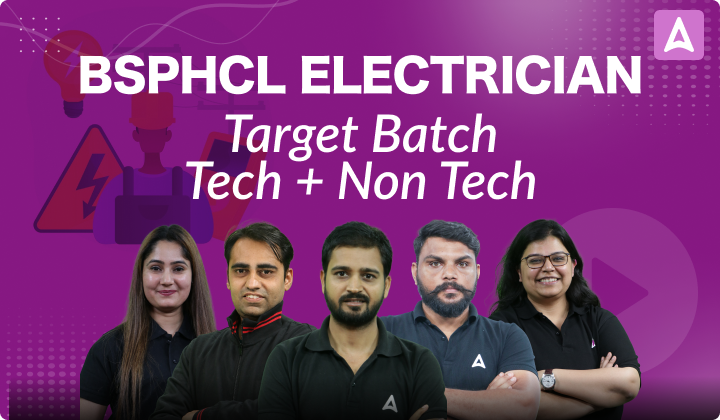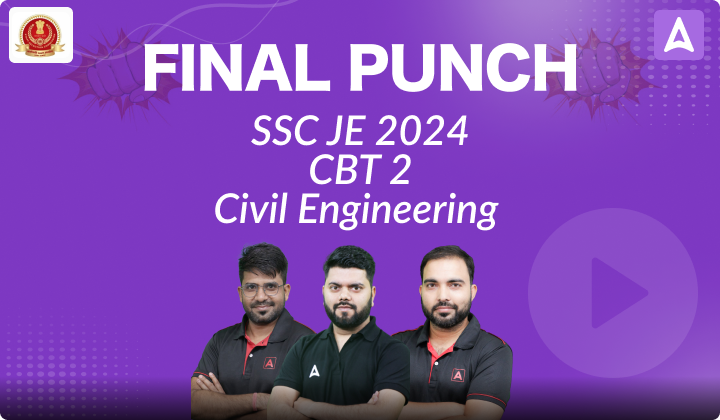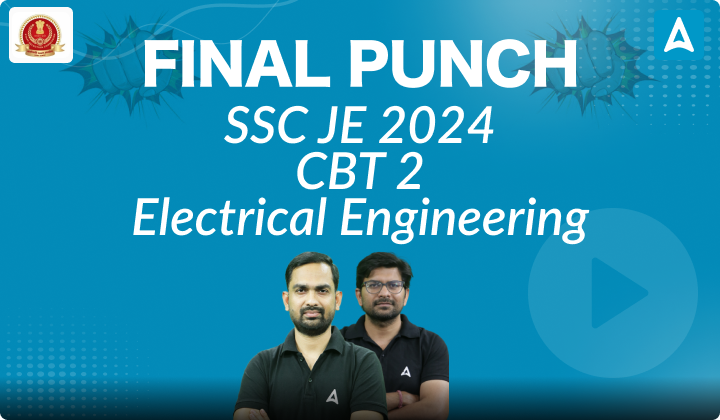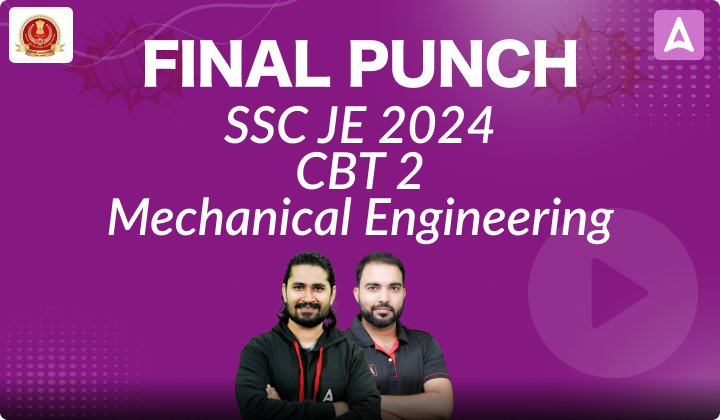Table of Contents
PSPCL RECRUITMENT 2021
Punjab State Power Corporation Ltd. (PSPCL), a power generating and distributing company of the Government of Punjab state, has released the notification for recruitment to the post of Clerk, Revenue Accountant, Junior Engineer (Electrical), Assistant Lineman & Assistant Sub Station Attendant Posts.
A total of 75 vacancies have been announced for the recruitment process of JE ELECTRICAL Engineering.
Exam Dates: 10 N0V-21 to 17 Nov-21
PSPCL-JE’21 EE: Daily Quiz
PSPCL-JE’21 EE: Daily Practices Quiz 14-Oct-2021
Each question carries 1 mark.
Negative marking: 1/4 mark
Total Questions: 06
Time: 06 min.
Q1. In which of the following generators negative voltage regulation can occur?
(a) Series generator
(b) Shunt generator
(c) Over compound generator
(d) Both a and c
Q2. In DC series motor, torque is proportional to which of the following? (Neglect saturation)
(a) Flux(φ)
(b) Armature current (Ia)
(c) Both a and b
(d) None of the above
Q3. In a transformer maximum flux density is not constant, the eddy current loss varies as
(a) f
(b) v
(c) f^2
(d) v^2
Q4. A 3-phase stepper motor has a 6 stator poles and 4 rotor poles, then the step angle is?
(a) 10⁰
(b) 30⁰
(c) 60⁰
(d) 40⁰
Q5. Sheath losses can be eliminated by
(a) Transposing cable along with cross bonding
(b) Transposing cable only
(c) Cross bonding
(d) None are effective
Q6. Armouring protects cables against
(a) Earth fault
(b) Capacitance leakage
(c) Mechanical damage
(d) Stray magnetic fields
SOLUTIONS
S1. Ans.(d)
Sol. Series generators and over compound generators have rising voltage characteristics. In both cases terminal voltage rises when load increases due to series field characteristics.
NOTE:
For flat compound generator voltage regulation is zero.
For shunt generator, under compound generator voltage regulation is positive.
S2. Ans.(c)
Sol. For DC series motor, Torque(T) α ϕI_a.
S3. Ans.(d)
Sol. Eddy current loss (Pe ) α ke Bm^2 f^2
And we know, Bm α v/f
If Bm=constant, then eddy current loss (P_e ) αf^2
If Bm is not constant, then eddy current loss (Pe ) α v^2
S4. Ans.(b)
Sol. Step angle(β)=((Ns-Nr)/(Ns×Nr ))×360^0=((6-4)/(6×4))×360^0=30⁰
S5. Ans.(a)
Sol. The sheath losses, which is proportional to the conductor losses, can be reduced by cross bonding the sheaths of the sheaths of the three single core cables.
Practically, in many cases the symmetry of the cable arrangement becomes impossible.
In order to completely eliminate the sheath losses, the sheath voltages are balanced by transposing by transposing the cables as in case of overhead lines along with cross bonding.
S6. Ans.(c)
Sol. When there is any insulation failure in the conductor, the fault current gets enough paths to flow through the armor if it is properly earthed. Providing extra mechanical protection and strength to cable is an important added advantage of armoring.

 RRB JE Recruitment 2024 Notification Out...
RRB JE Recruitment 2024 Notification Out...
 Candidates Above 30 Years Can Also Apply...
Candidates Above 30 Years Can Also Apply...
 TNPSC AE Recruitment 2024, Apply Online ...
TNPSC AE Recruitment 2024, Apply Online ...













